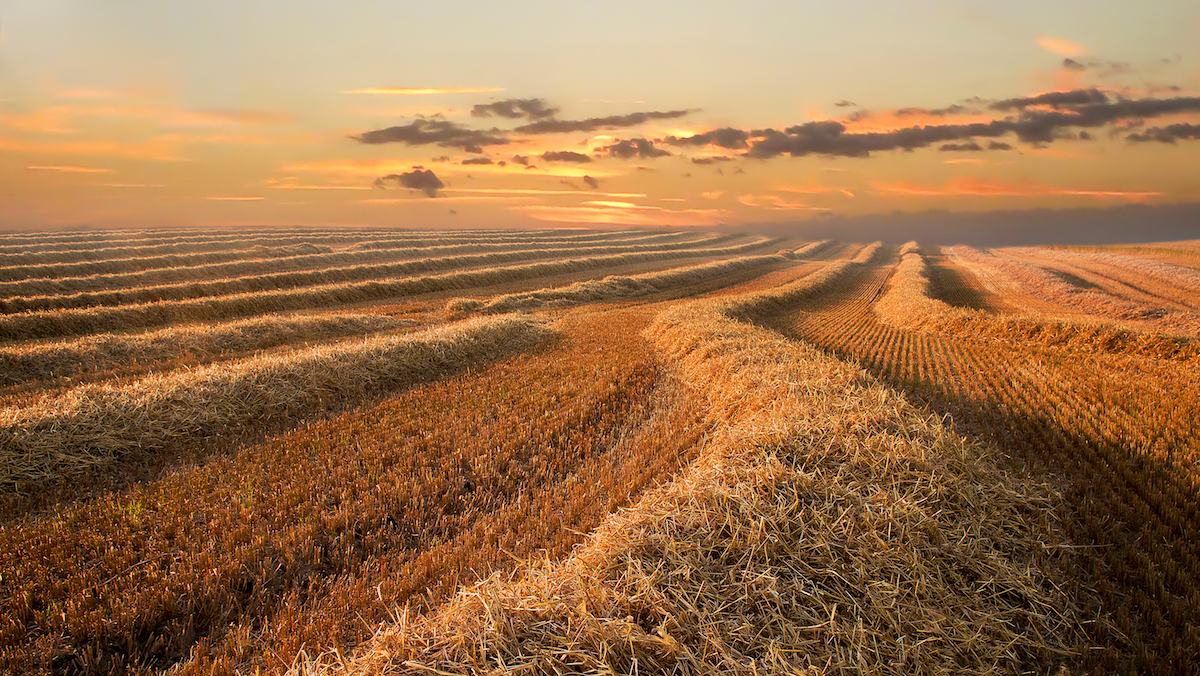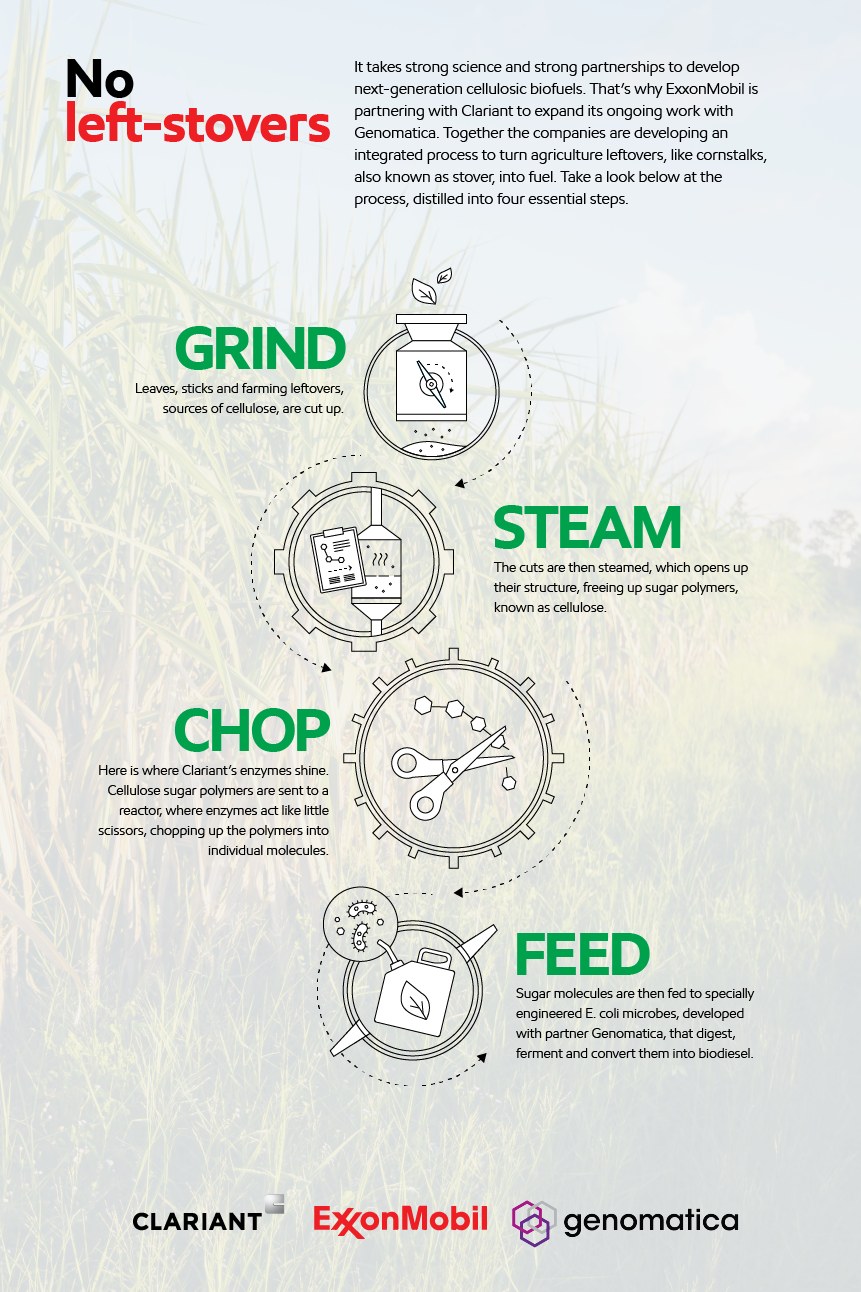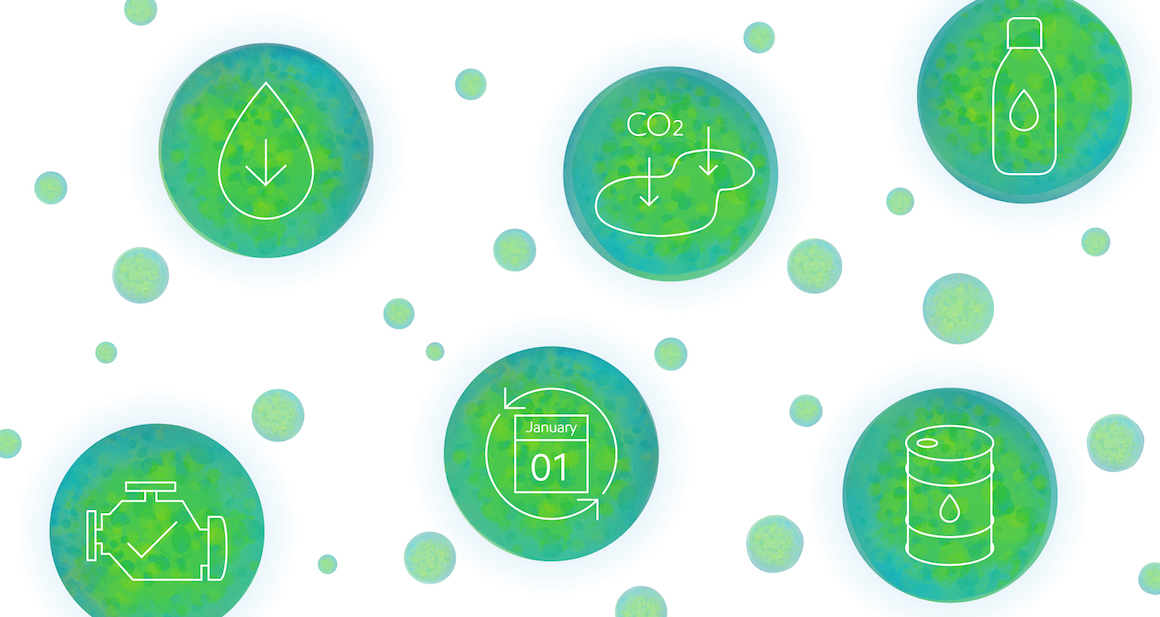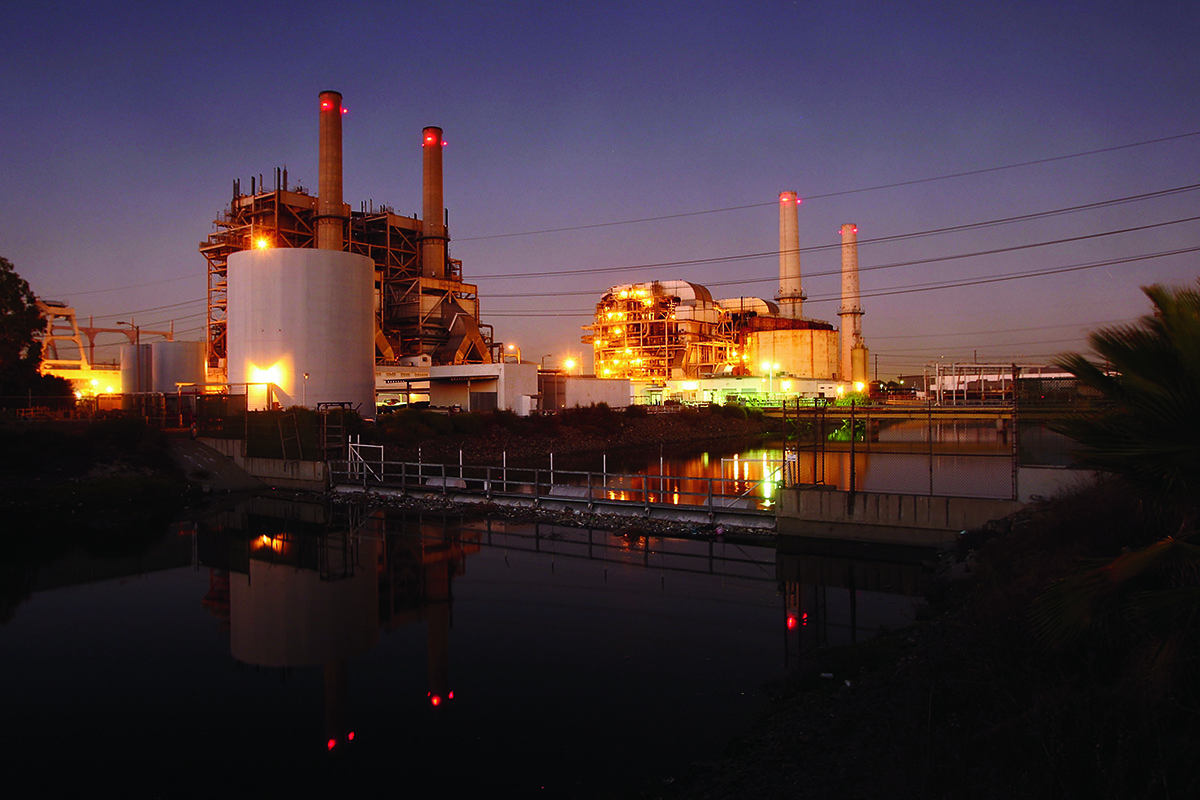The science behind converting farming or plant leftovers into next-generation, lower-emission biodiesel could in the future transform how heavy-duty drivers fill their tanks.
Clariant, an expert in extracting sugars from agriculture residue – inedible plant fibre, like wheat straw and cornstalks, that farmers have only limited use for – is working with ExxonMobil and bioengineering company Genomatica to advance the next phase in this biofuel research. ExxonMobil’s relationship with Genomatica began with REG Life Sciences, who Genomatica have since acquired.
Switzerland-based Clariant stands out for its highly innovative technology platform, called sunliquid®. Thanks to the flexible sunliquid process design and its proprietary enzyme platform, the process can unlock the full potential of different lignocellulosic feedstocks.
A variety of agricultural residues can be used as feedstocks. In Europe, wheat straw might be used. In the United States, corn stover or stalks might power trucks in the future; while in Brazil, abundant sugarcane bagasse or sugarcane tops and leaves can be the crop of choice.
“We have to look at how we can ensure quality of life for an ever-growing population and be highly sustainable at the same time,” says Markus Rarbach, Head of Biofuels & Derivatives at Clariant. “Clariant’s constant commitment to innovation and R&D with a strong focus on sustainability has led to our sunliquid technology, which allows us to transform these underutilized resources into liquid energy.”
Clariant’s sunliquid process of converting agricultural residues into sugars solves the first half of challenging biodiesel science, and it offers a technology able to work at commercial scale already.
For the second half, ExxonMobil and Genomatica have developed a bio-catalyst that is able to digest those sugars and transform them into biodiesel. The research team brought both parts of the science together at Clariant’s biofuel demonstration plant in Straubing, Germany earlier in 2019, where Clariant tested different types of cellulose feedstocks for fuel production.
Take a look below to see what it takes to turn plants into power, as this trio of companies gets a step closer.
Cellulosic biofuel is just one area of biofuel research ExxonMobil is currently working on. Up the road from Genomatica’s HQ in California, we’ve been working together with biotech company Synthetic Genomics to turn algae into a low-emission transport fuel for almost a decade.
We think there is a great case for advanced biofuels and our research is helping gain a better understanding of their true potential.






